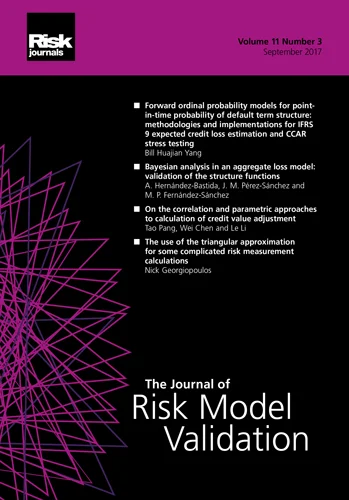Journal of Network Theory in Finance
ISSN:
2055-7795 (print)
2055-7809 (online)
Editor-in-chief: Ron Berndsen

Need to know
- We apply various configuration models to the bipartite network defined by loans of banks to firms in different sectors of the Spanish economy.
- In the binary version, the Bipartite Configuration model explains most of the higher-order topological and structural properties of this network.
- Similarly, the properties of the weighted one-mode projection matrices are mostly accounted for by the Bipartite Enhanced Configuration Model preserving both the degree and strengths sequences of the observed data.
- Among the few features not accounted for by configuration models, the “excessive" weighted clustering of the banks and sectors with the highest degrees stands out.
Abstract
We study the topological and structural properties of the bank–sector credit network of Spain over the period 1997–2007. In particular, we start by analyzing assortativity, different types of motifs and the nestedness phenomenon, both in the bipartite structure of the binary version of the network and in its weighted version. In order to assess the statistical significance of the network properties, we employ the family of the so-called bipartite configuration models, imposing initial constraints such as the degree sequence and/or strength sequence of the observed bipartite network. We find that, in the binary version, the so-called bipartite binary configuration model, maintaining the observed degrees, can replicate the main features of many properties of the observed network. In addition, the one-mode projection matrixes, which indicate lending portfolio overlaps between banks and borrowing portfolio overlaps between sectors, can mostly be predicted by information embedded in the degree sequence of the original bipartite structure. In the weighted version, we observe that the so-called bipartite enhanced configuration model, where both the degree and the strength sequences are preserved, outperforms (on average) the so-called bipartite weighted configuration model, which maintains only the strength sequence in replicating the topological features of the network. Moreover, comparing the observed network to all the referenced null models, we still find a number of features of higher-order topological properties that cannot be explained by information embedded in the observed degree and/or strength sequence. In particular, we discover an “excessive” weighted clustering of the banks and sectors with the highest degrees.
Copyright Infopro Digital Limited. All rights reserved.
As outlined in our terms and conditions, https://www.infopro-digital.com/terms-and-conditions/subscriptions/ (point 2.4), printing is limited to a single copy.
If you would like to purchase additional rights please email info@risk.net
Copyright Infopro Digital Limited. All rights reserved.
You may share this content using our article tools. As outlined in our terms and conditions, https://www.infopro-digital.com/terms-and-conditions/subscriptions/ (clause 2.4), an Authorised User may only make one copy of the materials for their own personal use. You must also comply with the restrictions in clause 2.5.
If you would like to purchase additional rights please email info@risk.net








